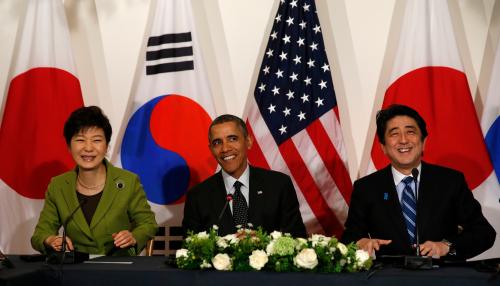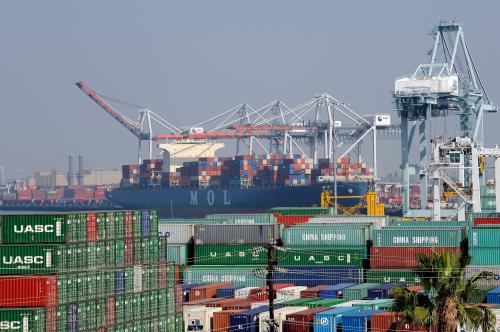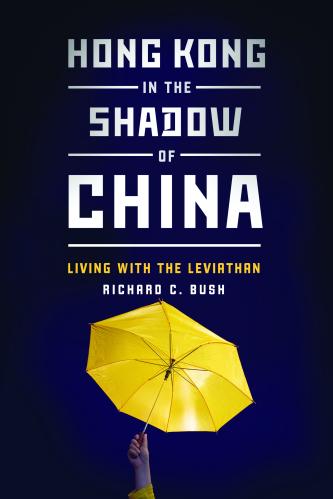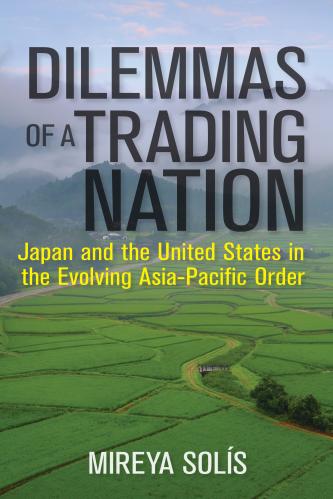On October 11, 2016, Richard Bush gave a presentation at the “Conference on Asia-Pacific Security vs. Trans-Pacific Order” hosted by the Chinese Institutes of Contemporary International Relations in Beijing, China. As prepared for delivery.
This is a very interesting topic. It matters a lot for the policies of concerned governments. For analysts, it also raises the question of conceptual definition. We may think we understand what is meant by the term “regional order,” but I’m not sure the issue is so simple.
We can see difference in understanding from how scholars in China and the United States use the concept. On the Chinese side, take, for example, my friend Tao Wenzhao. In the January issue of Heping yu Fazhan (“Peace and Development”) he drew a distinction between two orders that make up East Asia today. The first is what he calls the “US-led hub and spoke structure that was left behind after the Cold War.” The other is “a structure that was naturally generated in the process of Asian integration and that China worked hard to promote.” These two, Tao writes, coexist and infuse the competition between the United States and China. “The United States mainly maintains its leading status and interests through maintaining the existing order, particularly the Asian order; China’s interests are reflected in supplementing, reforming, and perfecting the existing order.”
Mainstream American specialists would probably have a different perspective. They would take positive note of the verbs Tao uses to describe China’s intent concerning the existing order (supplement, reform, perfect). They would in no way object to ideas like common security, mutually beneficial cooperation, building trust, working for win-win outcomes, and so on.
But these Americans would also say that alliances can serve both to deter an enemy and to foster regional stability. (They would also note that the Cold War persists in Asia, in the form of the threat that North Korea poses to South Korea and Japan. If any government should get the blame for sustaining a “cold war mentality,” it is the DPRK.) They might observe that America’s relations with some East Asian countries have improved in recent years because China’s actions towards those countries are inconsistent with its common-security principles, at least in those countries’ eyes. Furthermore, American analysts would suggest that U.S. policy has over six decades fostered economic growth in Asia, including, most importantly, by China. Because global supply chains reach across the Pacific, Washington is also part of Asia’s integration. Finally, they would question whether the competition is as zero-sum as some Chinese analysts suggest.
This difference in analysis takes me back to my original point about divergence in how the concept of regional order is defined. Actually, in English I prefer the word “structure” to the word “order.” For my taste, “order” has a connotation that is too rigid and top-down.
To be sure, a regional order can be top-down. That was certainly the situation in East Asia in the 1950s and 1960s, when the United States did implement a containment policy vis-à-vis China and others. It had a preponderance of military power and fostered an alliance system to permit forward deployment of its armed forces and deter its adversaries. Politically, it kept its allies on a tight leash, because it neither trusted nor respected them. Economically, it imposed economic sanctions. It used international law to reinforce its policies. This order, or structure, reflected the reality that the balance of power in Asia favored the coalition of countries led by the United States and constrained China, North Korea, North Vietnam, and the Soviet Union.
This really was a zero-sum contest, and some might say that the United States, with its “Cold War mentality,” is still trying to preserve an adversarial, anti-China regional order. Hypothetically, in contrast, Asia may evolve in such a way that a balance of power emerges that favors China and the countries that align with or defer to Beijing – to the disadvantage of the United States. That would occur, I believe, when one or more of these three conditions apply:
- The United States is unable to restore the pillars of its national power and no longer has the military and other resources to maintain a stabilizing presence in East Asia;
- Even if the United States possesses sufficient capabilities, it decides that its own national interest no longer requires an active role in world affairs, particularly in East Asia, and retreats to an isolationist security policy;
- China is more able and willing to pressure its neighbors to make a choice between it and the United States (that is, East Asian countries no longer have the ability or the will to rely on China for economic growth and America for security).
As a scholar, I would argue that a more positive concept of regional order is possible, a structure that includes arrangements that are not adversarial. This, by the way, is the sort of order that China says it is advocating, even though turning the concept into a reality is not an easy task.
What would such a more benign and non-antagonistic order look like? In general, it would probably have the following elements:
- The grand strategies of major actors are not mutually incompatible;
- No major actor deeply fears the intentions of any other, which reduces the prospects of security dilemmas and mutual hedging;
- There is a general consensus on the institutional architecture to support the order;
- Small countries don’t have to take sides among the major powers, and so, have sufficient freedom of action;
- The order is dynamic, not static; it evolves as the relative power of various actors changes, institutions adapt, and small powers adjust.
The U.S. alliance system fostered stability, and Washington restrained allies when necessary; One can make a case that the regional order we had in the recent past was consistent with this more positive conception. In my understanding:
- East Asian countries welcomed the re-emergence of China after 1979;
- Most of China’s neighbors, large and small, benefitted economically from both China’s growth and from the U.S. security presence, and that suited them just fine;
- The United States remained significant economically as the market of last resort and the source of the most advanced technology;
- Key actors worked together to resolve destabilizing conflicts (Cambodia, North Korea, Taiwan, Korea-Japan), and there was a general recognition that stability in U.S.-China relations can also promote security for all;
- Institutional architectures changed to reflect changing circumstances.
In this interpretation, the Obama Administration’s “re-balance to Asia” was not a new policy, but an adjustment of the long-standing approach to security in the region, one that entailed an active security, diplomatic, economic, and cultural presence. The content of the approach changed over time, with the key turning points being the Nixon opening to China, the dissolution of the Soviet Union, and the 2008 global financial crisis. But the basic approach remained the same.
I am prepared to extend my argument and say that the United States has not been opposed, in principle, to China’s projection of naval and air power in the East and South China Seas, up to the first island chain and beyond. Reasonable Americans understand, I believe, that China would be unwilling to perpetually accept a situation where it had to defend itself at the coast against a potential military attack from the east or the south. Every country that thinks it faces even a small risk of attack wants some measure of strategic depth.
I would argue that a more positive concept of regional order is possible, a structure that includes arrangements that are not adversarial.
But even as Americans might accept the idea that China’s expansion of China’s strategic perimeter is reasonable, they also see the need for it to be done in a restrained way. Expansion to the east and the south encroaches on the traditional operating areas of the U.S. and Japanese navies and air forces (and the Japanese Coast Guard). After some delay, Beijing and Washington have addressed the risk of accidental clashes through the Code for Unplanned Encounters at Sea (CUES) regime and bilateral Memorandum of Understanding (MOU) on maritime and air encounters. A similar MOU is needed for our coast guards. It is even more desirable that China and other regional maritime nations adopt risk-reduction and conflict-avoidance measures, such as a binding code of conduct for the South China Sea. Otherwise, the situation remains dangerous.
However, the focus of Chinese actions in recent years has been on promoting territorial and maritime-rights claims, and doing so in ways that have alienated most of its Southeast Asian neighbors and driven them into the arms of the United States. The sensible approach, it seems, would be for Beijing to execute a tactical retreat and work to rebuild trust with those neighbors through, for example, the negotiation of a binding code of conduct.
As the final point in my argument, I would say that once one applies the logic of my general conceptualization of a regional order to the specific circumstances of contemporary East Asia, it points to the need for a certain type of hegemonic stability. When I use that term I do not mean the U.S.-dominant, adversarial regional order that existed in the Cold War, and thus, a structure that includes some parties and excludes others.
Nor am I suggesting that the stability would come from one hegemon or just two. Rather, I am implying that regional stability is more likely when each of the major powers chooses to forego rivalry and that together they create an environment conducive to coexistence and cooperation. When I refer to major powers, I include Japan and Korea, not because they are U.S. allies, but because they are important countries in the region and the world. I might be inclined to include Indonesia, the largest country in Southeast Asia, particularly as it reaches its full potential.
Many might say that to advocate mutual restraint among East Asia’s larger powers is either foolhardy or naïve, or both. After all, the roots of rivalry are not shallow and conflicts of interest most certainly exist. But we cannot say that permanent rivalry will be a winning formula for any one of the parties concerned. All will lose in the end.
At least in declaratory policy, Washington and Beijing do not reject the idea of collaborating to produce a new type of hegemonic stability in East Asia. The United States has welcomed China’s rise and China acknowledges that America is a key actor in the region. China’s own proposals over almost two decades regarding a new security concept for Asia embody principles that no-one could dispute. This represents a starting point.
At least in declaratory policy, Washington and Beijing do not reject the idea of collaborating to produce a new type of hegemonic stability in East Asia.
There does seem to be a difference between Washington and Beijing on how to proceed. China tends to prefer to start with securing agreement on general principles and then applying them to concrete situations. The United States prefers to create principles through constructive interaction on specific issues (fostering “habits of cooperation”). Other obstacles come to mind:
- Each side sometimes exaggerates the danger that actions of the other pose to its interests. The U.S. government arguably overreacted to China’s proposal to establish the Asian Infrastructure Investment Bank, and the Chinese government apparently believed that the United States was behind the 2014 protests in Hong Kong.
- China’s hostility towards Japan has been counterproductive. It has fostered a long-term decline in Japanese attitudes towards China and puts the United States in the position of having to take sides. Public opinion will shape policy, but policymakers have a responsibility to shape and lead public opinion.
- Sometimes, the two countries opt for overly assertive action when each could have made their point by more careful signaling. It’s not clear to me that the negative consequences of “swarming” ships in the vicinity of the Diaoyu Islands in August 2016 justified the action. Nor does the United States induce restraint on China’s part in the South China Sea by showing too little restraint itself.
Perhaps by working on issues where it is possible to better manage them, it will be possible to build a larger order. Without a concerted effort to jointly “supplement, reform, and perfect” the “order” that still exists, the chances of a contest for supremacy will only increase.










Commentary
The future of the Trans-Pacific security order
October 11, 2016